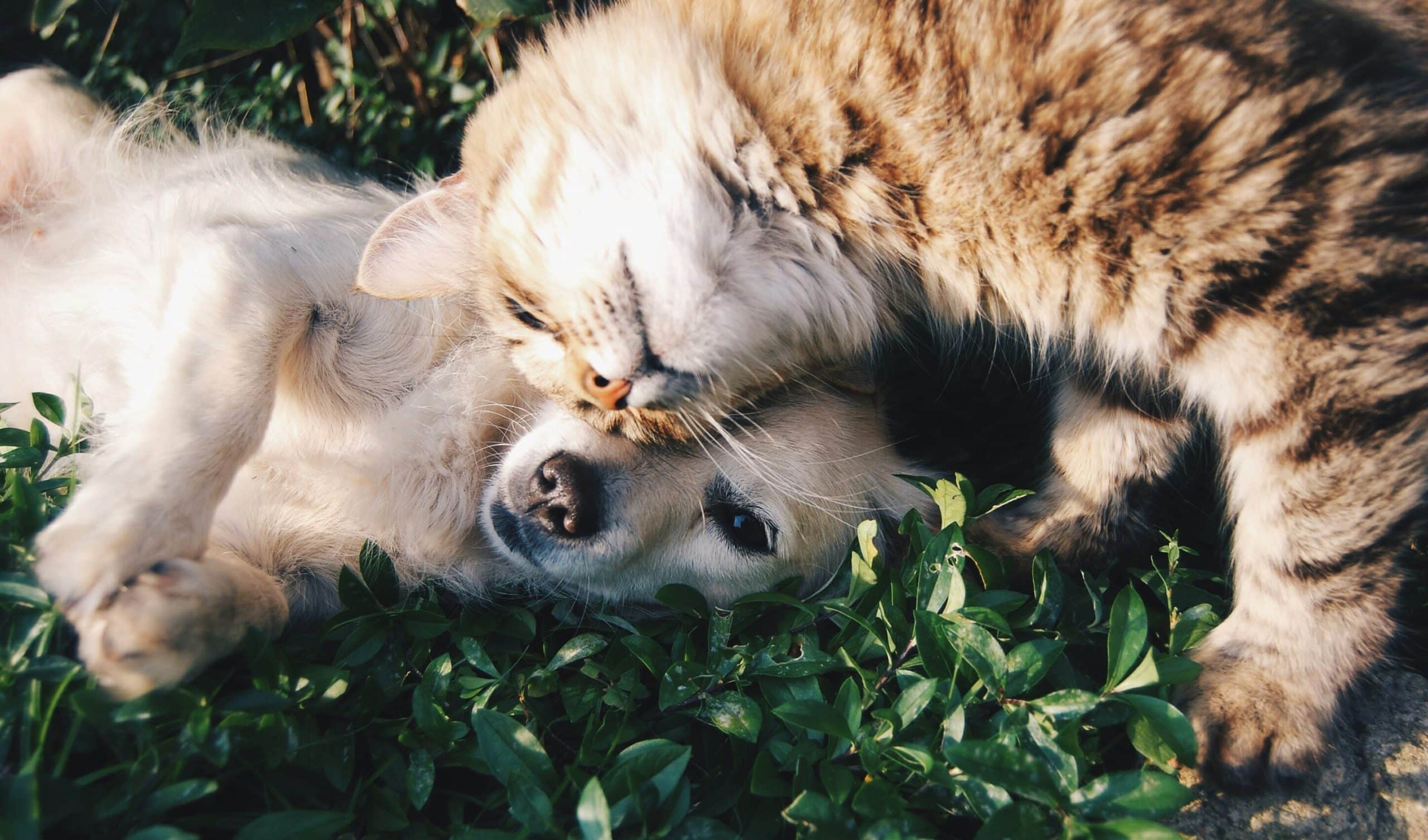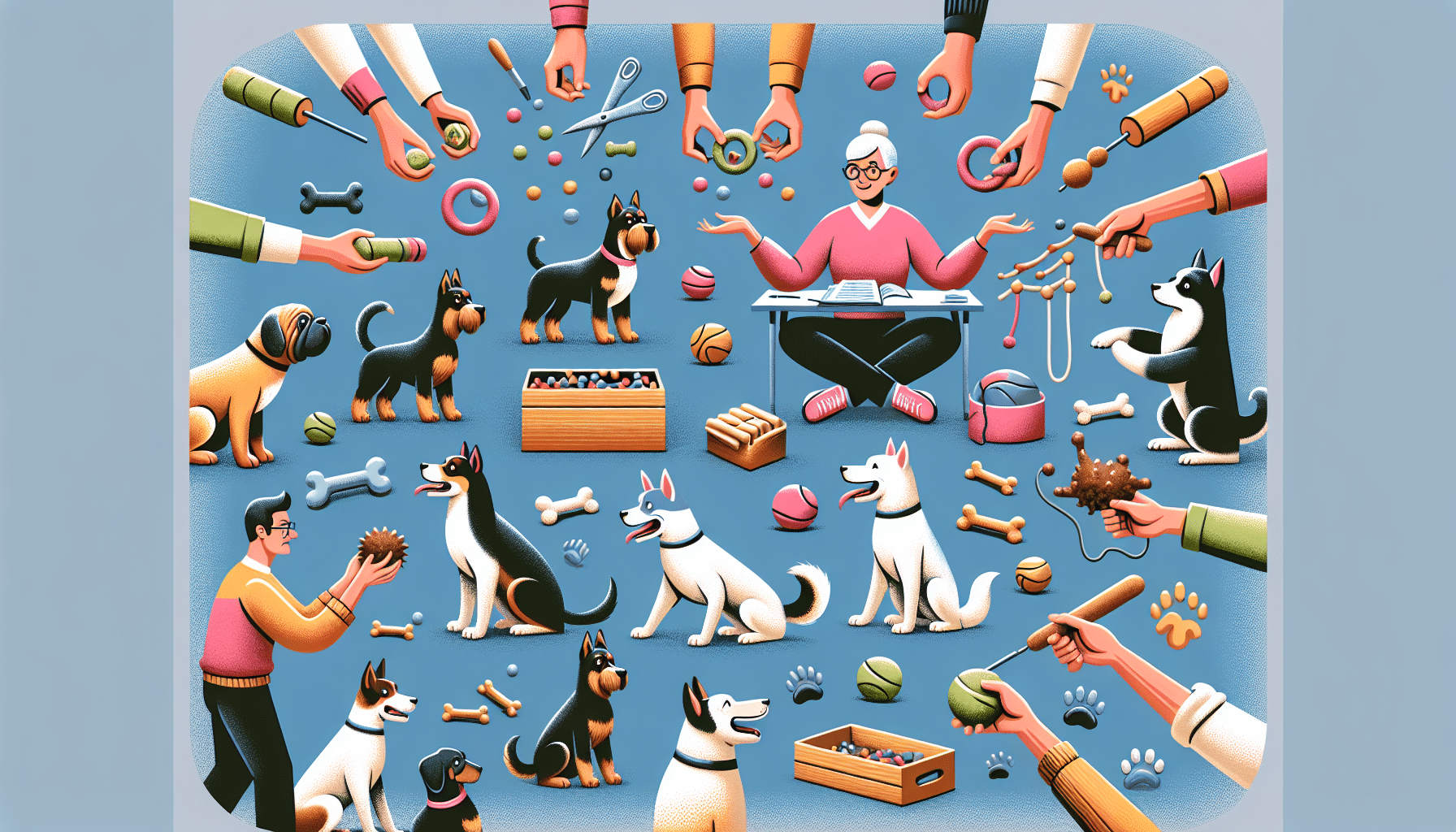If you have a stubborn breed of dog and find yourself constantly struggling to get them to let go of things they shouldn't have, then this article has got you covered. Whether it's a sneaker, a chew toy, or even something dangerous, teaching your pup the important command of "drop it" can save you both a lot of stress and frustration. In this article, we will explore some valuable tips and techniques to help you successfully train your stubborn four-legged friend to let go of whatever they've got their paws on. So, let's get started on this journey to a happier and more obedient furry companion!
Understanding Stubborn Breeds
Characteristics of stubborn dog breeds
When it comes to training dogs, every breed has its own unique characteristics. Some breeds are known to be more stubborn than others, which can make training them a bit challenging. Stubborn breeds are independent thinkers and may require a different approach when it comes to obedience training. They are often intelligent, confident, and have a strong sense of self.
Some common stubborn dog breeds include the Dalmatian, Bulldog, Chow Chow, and Shiba Inu. These breeds are known for their strong-willed nature and can sometimes be resistant to commands or training methods that they perceive as unnecessary or boring. Understanding the characteristics of stubborn breeds is crucial in effectively training them and establishing a strong bond.
Common challenges when training stubborn breeds
Training stubborn dog breeds can come with some unique challenges. These challenges often arise due to the breed's independent nature and their desire to assert their own will. Some common challenges when training stubborn breeds include:
-
Selective Hearing: Stubborn breeds may choose to ignore commands or only respond when it suits them. This selective hearing can make training sessions frustrating and time-consuming.
-
Strong-Willed Attitude: Stubborn breeds are often determined to do things their own way. They may resist certain commands or refuse to comply with training exercises, which can make progress slower.
-
Boredom and Lack of Interest: Stubborn breeds may become easily bored with repetitive training routines. They require mental stimulation and variety to stay engaged and motivated.
-
Dominance Issues: Some stubborn breeds may have a strong urge to be dominant, making it important to establish yourself as the pack leader and maintain consistent boundaries.
By understanding these common challenges, you can tailor your training approach to better suit the needs of your stubborn breed and overcome any obstacles that may arise.
Establishing Trust and Bond with Your Dog
Building a strong foundation of trust
Trust is the foundation of any successful relationship, including the one you have with your dog. Building trust involves creating an environment where your dog feels secure, loved, and valued. Here are some tips to establish a strong foundation of trust with your stubborn breed:
-
Consistency: Be consistent with rules, boundaries, and training methods. This helps your dog understand what is expected of them and builds trust through predictability.
-
Positive Reinforcement: Use positive reinforcement techniques to reward good behavior and build trust. Give your dog plenty of praise, treats, and affection when they follow commands or exhibit desired behaviors.
-
Patience and Understanding: Show patience and understanding when training your stubborn breed. Avoid getting frustrated or angry, as this can damage the trust you've built and hinder progress.
-
Socialization: Expose your dog to different environments, people, and other animals from a young age. This helps them develop positive experiences and build trust in new situations.
Bonding exercises and activities
Building a strong bond with your stubborn breed goes beyond training sessions. Engaging in bonding exercises and activities strengthens the connection between you and your dog. Here are some activities that can help foster a strong bond:
-
Playtime: Regular play sessions not only provide physical exercise but also create opportunities for bonding. Use interactive toys and games that encourage cooperation and engagement.
-
Training Sessions: Incorporate training into your daily routine, making it a fun and interactive experience for both you and your dog. This strengthens the bond while also reinforcing obedience commands.
-
Quality Time: Spend quality time with your dog, such as going for walks, cuddling, or simply sitting down together. This dedicated time helps form a deep emotional connection and increases trust.
By focusing on building trust and engaging in bonding activities, you establish a solid foundation for successful training sessions with your stubborn breed.

This image is property of images.unsplash.com.
Teaching the 'Drop It' Command
Importance of teaching the 'Drop It' command
The 'Drop It' command is a crucial obedience skill that every dog, including stubborn breeds, should learn. Teaching your dog to drop objects on command can prevent potentially dangerous situations and promote their safety. It also helps to curb unwanted behaviors like resource guarding or chewing on inappropriate items.
Basic obedience training prerequisites
Before teaching the 'Drop It' command, your dog should have a basic understanding of obedience commands such as 'Sit,' 'Stay,' and 'Leave It'. These foundational skills create a solid framework for further training and make it easier for your dog to grasp new commands.
Step-by-step guide for teaching 'Drop It'
-
Start with a Toy: Begin by using a toy that your dog enjoys playing with. Hold the toy in your hand and encourage your dog to grab it with gentle playfulness.
-
Offer a Tasty Treat: Show your dog a high-value treat and encourage them to drop the toy by placing the treat near their nose. Reward them with the treat when they release the toy.
-
Use the Command: Introduce the 'Drop It' command when your dog begins to associate the action of releasing the toy with receiving a treat. Say "Drop It" as they release the toy and reward them with praise and treats.
-
Repeat and Reinforce: Practice this exercise in short, frequent sessions over a few days. Gradually increase the difficulty by using different toys or objects.
-
Generalize the Command: Once your dog understands the 'Drop It' command, practice it in various environments and with different objects. This helps them learn to generalize the command and respond in different situations.
Remember, consistency and patience are key when teaching any command, especially to stubborn breeds. Celebrate your dog's successes, no matter how small, and always end each training session on a positive note.
Use of Positive Reinforcement
Benefits of positive reinforcement
Positive reinforcement is an effective training technique that focuses on rewarding desired behaviors rather than punishing undesirable ones. This approach has several benefits when working with stubborn breeds:
-
Motivation and Engagement: Positive reinforcement motivates your dog to engage in the desired behavior by rewarding them with treats, praise, or play. This keeps training sessions positive and enjoyable for both of you.
-
Clear Communication: Positive reinforcement provides clear communication to your dog about what you expect from them. By rewarding desired behaviors, you strengthen the connection between the action and the reward, making it more likely to be repeated.
-
Building Trust: Positive reinforcement helps build trust between you and your dog, creating a bond based on mutual respect and understanding. The use of rewards instead of punishment fosters a positive learning environment.
Choosing the right rewards
When using positive reinforcement, it's important to choose rewards that are motivating and valuable to your dog. Every dog has different preferences, so experiment with different types of rewards to find what works best for your stubborn breed. Here are some reward options to consider:
-
Treats: High-value treats that your dog finds irresistible can be used as rewards during training sessions. Choose treats that are small, soft, and easy to consume quickly.
-
Verbal Praise: Dogs thrive on verbal praise and positive feedback. Use an enthusiastic and upbeat tone of voice to let your dog know they've done something right.
-
Playtime: For some dogs, playtime and interactive games can be highly rewarding. Incorporate play as a reward for good behavior, making training sessions more engaging and enjoyable.
-
Affection: Many dogs respond well to physical affection such as petting, belly rubs, or a favorite scratch spot. Reward your dog with affectionate gestures when they demonstrate desired behaviors.
-
Toys: Certain dogs may find specific toys or playthings particularly rewarding. Use their favorite toy as a reward during training, allowing them to play with it after successfully following a command.
Remember to always use rewards that are safe for your dog and align with their individual preferences. The more rewarding the experience, the more motivated your stubborn breed will be to engage in the desired behaviors.
Consistency and timing
Consistency and proper timing are essential when using positive reinforcement. It's important to reward your dog immediately after they display the desired behavior so they can make the connection between the action and the reward. Delayed reinforcement may confuse your dog and make it harder for them to understand what they are being rewarded for.
Additionally, consistency is crucial in providing clear expectations to your dog. Use the same command and reward system every time you want to reinforce a behavior. By being consistent, you help your stubborn breed understand what is expected of them and reinforce the desired behavior effectively.

This image is property of images.unsplash.com.
Handling Resistance and Frustration
Recognizing signs of resistance
Stubborn breeds often display signs of resistance during training sessions. They may become unresponsive, ignore commands, or demonstrate stubborn behavior. Recognizing these signs is crucial in handling resistance effectively. Some signs to look out for include:
-
Ignoring Commands: Your dog may deliberately ignore commands or exhibit a lack of interest in training activities.
-
Disobedience: Stubborn breeds may choose not to comply with certain commands or exhibit selective obedience.
-
Restlessness or Distractibility: Your dog may become restless or easily distracted during training, making it challenging to maintain their focus.
-
Avoidance Behaviors: Stubborn breeds may try to avoid training sessions or display avoidance behaviors when asked to perform certain tasks.
Patience and calmness
When faced with resistance, it's crucial to remain patient and calm. Reacting with frustration or anger can damage the bond you've built with your dog and hinder their progress. Instead, take a step back and reassess the situation. Use a calm and firm tone when delivering commands and provide ample praise and rewards when your dog demonstrates the desired behavior.
By maintaining a positive and patient attitude, you create a supportive environment that encourages your stubborn breed to cooperate and respond positively.
Adapting to your dog's learning style
Each dog has a unique learning style, and understanding your stubborn breed's style can help tailor your training methods to their needs. Some dogs respond better to visual cues, while others may be more responsive to verbal commands or physical demonstrations. Here are some tips for adapting to your dog's learning style:
-
Visual Learners: If your dog responds well to visual cues, use hand signals alongside verbal commands. This helps reinforce the command and provides additional clarity.
-
Auditory Learners: For dogs that respond better to verbal cues, focus on using clear and consistent verbal commands. Gradually reduce the use of visual cues to strengthen their response to verbal commands.
-
Hands-On Learners: Some stubborn breeds may respond best to physical demonstrations and guidance. Use gentle physical cues or prompts to help them understand and respond to commands.
By adapting your training approach to suit your dog's learning style, you can overcome resistance and make training sessions more effective and enjoyable for both of you.
Enrichment and Mental Stimulation
Understanding the importance of mental stimulation
Stubborn breeds often require more than just physical exercise – they also need mental stimulation to keep their minds engaged. Boredom can lead to behavioral issues, so incorporating mental challenges and enrichment activities is essential. Mental stimulation helps alleviate restlessness, promotes mental well-being, and can even exhaust your dog in a positive way.
Interactive toys and puzzles
Interactive toys and puzzles are excellent tools for providing mental stimulation to stubborn breeds. These toys require your dog to think, problem-solve, and engage in interactive play. Consider the following interactive toys for mental stimulation:
-
Treat-Dispensing Toys: Hide treats or kibble inside a toy that your dog needs to manipulate or solve to access the food. This engages their problem-solving skills and keeps them mentally stimulated.
-
Puzzle Games: Use puzzle games designed for dogs that require them to move pieces, lift flaps, or solve challenges to access hidden treats or toys.
-
Sensory Toys: Choose toys that engage multiple senses, such as toys with squeakers, textures, or hidden compartments. These toys encourage exploration and mental engagement.
Remember to supervise your dog during interactive play to ensure their safety and prevent any destructive behavior.
Engaging activities for stubborn breeds
In addition to interactive toys, engaging activities can provide mental stimulation for your stubborn breed. Here are some ideas to keep them mentally stimulated:
-
Training Games: Incorporate learning and obedience exercises into fun games. For example, teach your dog to find hidden toys or treats using their sense of smell.
-
Nose Work: Develop your dog's natural scenting abilities by setting up scenting games or introducing them to the sport of canine nose work. This engages their mental and olfactory senses.
-
Obstacle Courses: Set up a simple obstacle course in your backyard or living space, including tunnels, jumps, and weaving poles. Guiding your dog through the course challenges their problem-solving skills and mental focus.
-
New Experiences: Introduce your stubborn breed to new environments, people, and situations. This helps stimulate their curiosity and mental flexibility.
By combining interactive toys, engaging activities, and varied experiences, you provide your stubborn breed with the mental stimulation they need for a well-balanced and happy life.

This image is property of images.unsplash.com.
Managing Distractions and Focus
Creating a conducive training environment
When training a stubborn breed, it's important to create a conducive environment that minimizes distractions. Here are some tips for setting up a successful training space:
-
Quiet and Calm: Choose a quiet and calm area for training sessions. Minimize external noises and ensure your dog feels relaxed and focused.
-
Remove Temptations: Remove any objects or items that could distract your dog during training. This helps maintain their attention on the training exercises.
-
Limit Visual Stimulation: If your dog is easily distracted by visual stimuli, consider using barriers or closing doors to minimize their visibility.
-
Consistent Training Area: Designate a specific area for training your dog. This helps create an association between that space and the training activities, improving focus and concentration.
By creating a distraction-free zone, you increase the chances of your stubborn breed staying focused and responsive during training sessions.
Gradual exposure to distractions
While it's important to minimize distractions during training, gradually exposing your dog to distractions can help improve their focus and responsiveness in the long run. Introduce distractions in a controlled manner, ensuring they don't overwhelm your dog. Here are some steps for gradually exposing your stubborn breed to distractions:
-
Start with Minimal Distractions: Begin training in a low-distraction environment and gradually introduce minor distractions, such as mild noises or movement.
-
Increase Distractions in Increments: Gradually increase the level of distractions over time. This could include introducing toys, treats, or mild distractions like a doorbell or a ringing phone.
-
Maintain Focus and Reinforce Commands: During distraction training, always maintain focus on your dog and reinforce the obedience commands. Reward them when they successfully respond to a command despite the distraction.
-
Practice Patience: Be patient with your dog as they learn to navigate distractions. Start with shorter training sessions and gradually increase the duration as their focus improves.
By gradually exposing your stubborn breed to distractions, you build their resilience and ability to maintain focus despite external stimuli.
Techniques for improving focus
Improving your stubborn breed's focus is a combination of training techniques and understanding their individual attention span. Here are some techniques to help improve your dog's focus:
-
Short and Frequent Training: Keep training sessions short but frequent, as shorter sessions can help maintain your dog's focus and prevent boredom.
-
Engage with High-Value Rewards: Use high-value rewards that capture your dog's attention and motivate them to stay focused. This could be a special treat or a favorite toy.
-
Capture and Redirect Focus: If you notice your dog becoming distracted during training, redirect their attention back to you by using a cue or a small physical prompt.
-
Focus-Enhancing Exercises: Practice focus-enhancing exercises, such as making eye contact or teaching your dog to look at you on command. These exercises help strengthen focus and engagement.
Remember that each dog is unique, and some stubborn breeds may require more time and patience to improve their focus. By consistently working on focus-enhancing techniques, you can help your stubborn breed stay engaged and attentive during training sessions.
Seeking Professional Help
When to consider professional dog training
Sometimes, professional help may be necessary to address specific challenges and behaviors exhibited by your stubborn breed. Consider seeking professional dog training if you encounter any of the following situations:
-
Aggressive Behavior: If your dog displays aggressive behavior towards people or other animals, professional intervention is crucial for everyone's safety.
-
Incessant Barking or Destructive Behaviors: Excessive barking or destructive behaviors can be signs of frustration or underlying anxiety. A professional trainer can help address these issues.
-
Inconsistent Progress: If your current training methods are not yielding consistent progress, a professional trainer can provide guidance and personalized training plans.
-
Specific Behavioral Issues: Behavior problems such as separation anxiety, resource guarding, or fear-based reactions may require specialized assistance from a professional behaviorist.
Benefiting from expert guidance
Professional dog trainers and behaviorists have the knowledge and expertise to understand the unique needs of stubborn breeds. They can provide invaluable guidance, tools, and techniques to help you overcome training challenges and address specific behaviors. Working with a professional can ensure effective training and improve the overall well-being of your stubborn breed.
Finding a qualified trainer or behaviorist
When seeking professional help, it's important to find a qualified trainer or behaviorist who has experience working with stubborn breeds. Consider the following when searching for a professional:
-
Credentials and Qualifications: Look for trainers or behaviorists who have relevant certifications or accreditations from reputable organizations.
-
Positive Training Methods: Ensure the professional uses positive reinforcement techniques and avoids harsh or punitive methods that could harm your dog's well-being.
-
Recommendations and Reviews: Seek recommendations from trusted sources, such as veterinarians or other dog owners. Online reviews and testimonials can also provide valuable insights.
-
Initial Consultation: Arrange an initial consultation to discuss your dog's needs and assess if the trainer or behaviorist is a good fit for you and your stubborn breed.
By finding a qualified professional who aligns with your training goals and values, you can establish a successful partnership that benefits both you and your stubborn breed.

Dealing with Aggression and Resource Guarding
Understanding aggression and resource guarding
Aggression and resource guarding can be significant challenges when training stubborn breeds. Aggression may manifest as growling, biting, or lunging towards people or other animals. Resource guarding occurs when a dog becomes possessive and defensive over objects, food, or territory. Dealing with these behaviors requires a cautious approach and often requires professional assistance.
Special considerations for stubborn breeds
Stubborn breeds may be more prone to exhibit aggression or resource guarding due to their strong-willed nature. It's important to approach these behaviors with patience, understanding, and the following considerations:
-
Avoid Punishment: Harsh punishment can escalate aggression and worsen resource guarding behaviors. Instead, focus on positive reinforcement training techniques that promote calmness and cooperation.
-
Recognize Triggers: Identify the triggers that provoke aggressive or guarding behaviors in your stubborn breed. This could be certain toys, food, or territorial spaces.
-
Provide a Safe Space: Create a designated safe space for your dog where they can retreat when feeling anxious or overwhelmed. This helps reduce the likelihood of aggression or guarding behaviors.
-
Manage the Environment: Manage your dog's environment to minimize potential triggers. For example, keep valuable objects out of reach or prevent access to areas that trigger resource guarding.
Seeking professional assistance for aggression cases
Aggression and resource guarding are complex behaviors that require professional intervention. If your stubborn breed displays aggression towards people or other animals, or if resource guarding becomes a safety concern, it is crucial to seek the assistance of a professional dog behaviorist. They can assess the behaviors, identify underlying causes, and develop a comprehensive behavior modification plan to address the issues safely and effectively.
Remember, aggression and resource guarding should never be ignored, as they pose risks to the well-being of your dog and others. Professional help is essential in ensuring the safety and happiness of both you and your stubborn breed.
Consistency and Persistence
Importance of consistency in training
Consistency is essential when training stubborn breeds. Dogs thrive on routine and clear expectations, so maintaining consistent training methods and boundaries is crucial for their understanding. Here's why consistency is important:
-
Clear Communication: Consistency provides clear communication to your dog about the expected behavior. By consistently enforcing rules and boundaries, your dog understands what is expected of them.
-
Reinforcement of Learning: Consistent training methodologies reinforce the learning process. When your stubborn breed is consistently rewarded for good behavior or politely reminded when they misbehave, they learn faster and retain the lessons.
-
Establishment of Routine: Consistency creates a routine that your dog can rely on. This routine instills an understanding of the training exercises and reinforces the bond between you and your stubborn breed.
Dealing with setbacks and challenges
Training any dog, especially a stubborn breed, comes with its fair share of setbacks and challenges. It's normal to face obstacles along the way that may temporarily hinder progress. When dealing with setbacks, remember the following:
-
Patience and Persistence: Be patient with your dog and maintain a persistent attitude. Rome wasn't built in a day, and training a stubborn breed takes time and dedication.
-
Revisit Foundations: If you encounter setbacks, it may be helpful to revisit the foundation of your training. Assess whether you need to reinforce basic commands or adjust your approach.
-
Seek Guidance: Don't hesitate to seek guidance from a professional trainer or behaviorist if you feel stuck or overwhelmed. They can provide valuable insights, tips, and techniques to help overcome challenges.
-
Celebrate Small Victories: Focus on celebrating small victories along the way. Acknowledge and reward progress, no matter how small, as this keeps both you and your dog motivated and engaged.
Persistence pays off
Training your stubborn breed requires persistence and dedication. Remember, the effort you put into training your dog will pay off in the long run. Consistent training, positive reinforcement, and a patient approach will help your dog understand what is expected of them and build a strong bond with you. In time, your stubborn breed will develop into a well-behaved and happy companion. Keep pushing forward, and celebrate the milestones achieved along the way.



